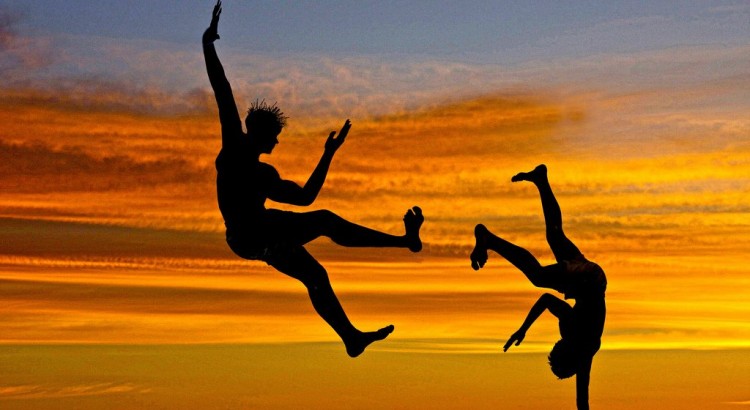Capoeira may not ring a bell as say, judo or taekwondo, but it is slowly gaining a lot of attention from health buffs and martial arts enthusiasts. One of the things that make capoeira appealing is its very nature. It combines elements of music, dance, and acrobatics. As a martial art, it is revered for the use of quick and sophisticated moves that mainly rely on speed, power, and leverage.
Origins
Experts believe that capoeira goes all the way back to the 17th century, when Portuguese colonists started to send African slaves to Brazil. While there is no written record proving that the martial art was started by the Africans, oral traditions give strong evidences that capoeira has African roots.
The African slaves developed their own martial art for self-defense, but had to hide it from authorities. As such, they concealed their traditions into a form of dance. This can be seen at the way Capoiera techniques are performed.
In Capoeira, one performer plays the role of a slave while the other is the master or Caporal. During a performance, the slave defends himself against the master. It is for this reason that capoeira is also described as a warrior’s dance in Brazil.
Music is integral as it sets the tempo and style of game to be played within the roda. Music is typically formed by singing and instruments such as berimbau, a single string instrument.
By the 18th century, those who practiced Capoeira were arrested as the martial art was considered a criminal act. In fact, an act was signed by then Brazilian president Dodora da Fonseca in 1890 that prohibited the practice.
However, the masses continued to practice it. Eventually, Manuel dos Reis Machado brought the Academic Capoeira to the masses. By the turn of the 19th century, the ban on the martial art was lifted. The first Capoeira school was founded in 1932 by Reis Mechado, who is widely known as the father of modern Capoeira.
Techniques
As a martial art, Capoeira is fast and versatile. After all, it is historically focused in enabling its practitioners who are at a technical disadvantage to fight off a phalanx of opponents. Its fighting style emphasizes on the use of the lower back to kick, sweep and take down adversaries. It also features complex positions and body positions that are meant to strike, dodge and move seamlessly.
In Capoeira, defense is built on the idea of avoiding an attack through evasive moves called esquivas. Evasive moves largely depend on the direction of an attack as well as the intention of the defender. It can be done standing, or with one hand leaning on the floor. A block may be made, but only when an esquiva is totally non-viable.
This defensive strategy allows for quick and unpredictable counters, and lets practitioners to focus on more than one opponent. It also enables the practitioner to face an armed adversary even without the use of weapons.
In Capoiera, practitioners are taught to execute a series of rolls and acrobatics that enable them to quickly overcome a takedown. This combination of attacks, defensive techniques and mobility gives the martial art its choreography-like style.
Capoiera is also played as a game. During a game, the focus is not on destroying or knocking down the adversary but avoiding punches or elbow strikes. Capoeira practitioners who play it as a game are more focused on their skills particularly on the defensive end. But this is not to say that Capoiera as a game can’t be dangerous as well, as there are lots of instances when a game between two highly-skilled practitioners can become aggressive.
Benefits
So why should you take up Capoiera instead of other more popular martial arts? Here are some of the benefits you’ll gain when you practice this Brazilian martial art.
- Stress reduction—engaging in capoiera can help you relax and manage stress.
- Strength improvement—capoiera practitioners always move around on their hands in handstands, poses, and rolls. As such, you’ll benefit from a marked improvement on strength, particularly on the upper body. There are also lots of movements that would require you to engage the abs and improve your core strength as a consequence.
- Improve Flexibility—capoeira practitioners can give yoga enthusiasts a run for their money when it comes to flexibility.
- Cardio and Stamina Improvement— With the constant repetition of movements and techniques, capoiera can provide an intense cardio workout. In fact many athletes are surprised that they easily gas out when performing a Capoiera workout because the martial art uses a lot of muscle groups in unique ways.
- Self defense—like other martial arts, Capoeira teaches you how to defend yourself against aggressors.
With its very unique nature, it is not surprising why Capoiera is getting more and more followers with each passing day.
